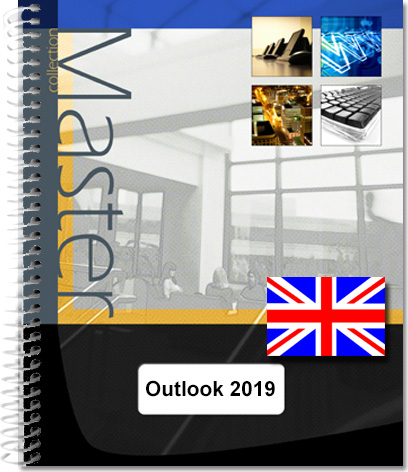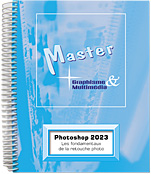- Supports de cours
- Outlook 2019 and Office 365 versions - (E/E): Text in English with the English version of the software
Outlook 2019 and Office 365 versions (E/E): Text in English with the English version of the software
This practical guide provides a detailed introduction to the functions of the Microsoft® Outlook e-mail client; it was written using the 2019 version of Outlook and includes the new features and differences in the version of Outlook provided with Office 365. It is aimed at anyone who wants to explore and familiarise themselves with all its features.
Following a description of the work environment, you will learn how to send e-mails, with the option of using a template. You will also find...
- Niveau Initié à Confirmé
- Nombre de pages 262 pages
- Parution janvier 2020
- Niveau Initié à Confirmé
- Parution janvier 2020
This practical guide provides a detailed introduction to the functions of the Microsoft® Outlook e-mail client; it was written using the 2019 version of Outlook and includes the new features and differences in the version of Outlook provided with Office 365. It is aimed at anyone who wants to explore and familiarise themselves with all its features.
Following a description of the work environment, you will learn how to send e-mails, with the option of using a template. You will also find out how to send back an e-mail, recall an e-mail sent in error, or flag a message for follow-up. You will learn about the Focused Inbox, learn to reply to an e-mail, forward it, and deal with any attachments. To add the finishing touches to your e-mails you will learn how to insert a signature, file, calendar etc.
You will learn in detail how to configure your e-mail: select the message formatting, create one or more signatures, set up an out-of-office message, define conditional formatting for messages (e.g. messages with “Budget” in the subject line will be displayed in red), deal with Junk e-mail and automate repetitive tasks using Quick actions (e.g. automatically forwarding certain e-mails to your manager).
The third section deals with the Calendar: you will learn how to manage your diary and plan appointments, events, send and respond to meeting invitations, publish and share your calendars and create calendar groups. Outlook can also be used to manage your contacts, to plan tasks and to create notes. You will see how to manage all the items used in Outlook: select items, search them, sort them, filter them, group them, organise them into categories etc.
There is a special chapter about archiving e-mails and creating Outlook (.pst) data files.
The final chapter deals with configuring your e-mail software: how to modify and create new views, manage shortcut groups and folders, add e-mail accounts and customise the ribbon.
Following a description of the work environment, you will learn how to send e-mails, with the option of using a template. You will also find out how to send back an e-mail, recall an e-mail sent in error, or flag a message for follow-up. You will learn about the Focused Inbox, learn to reply to an e-mail, forward it, and deal with any attachments. To add the finishing touches to your e-mails you will learn how to insert a signature, file, calendar etc.
You will learn in detail how to configure your e-mail: select the message formatting, create one or more signatures, set up an out-of-office message, define conditional formatting for messages (e.g. messages with “Budget” in the subject line will be displayed in red), deal with Junk e-mail and automate repetitive tasks using Quick actions (e.g. automatically forwarding certain e-mails to your manager).
The third section deals with the Calendar: you will learn how to manage your diary and plan appointments, events, send and respond to meeting invitations, publish and share your calendars and create calendar groups. Outlook can also be used to manage your contacts, to plan tasks and to create notes. You will see how to manage all the items used in Outlook: select items, search them, sort them, filter them, group them, organise them into categories etc.
There is a special chapter about archiving e-mails and creating Outlook (.pst) data files.
The final chapter deals with configuring your e-mail software: how to modify and create new views, manage shortcut groups and folders, add e-mail accounts and customise the ribbon.
 Editions ENI Livres | Vidéos | e-Formations
Editions ENI Livres | Vidéos | e-Formations











































































































































